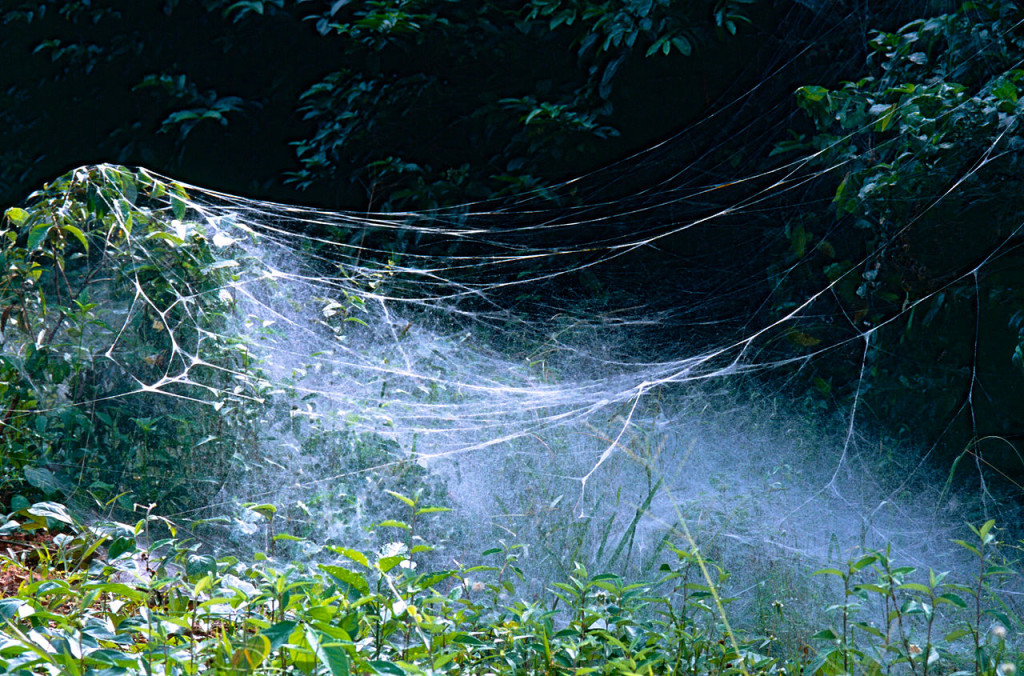Well, there’s a species of spider that grows and habitually lives in colonies and forms spider webs that can reach an astonishing 25 feet in height. The spider’s name is Social Spider, also called Anelosimus Eximius. It is a spider that socializes with its fellow spiders very quickly and builds giant spider webs reaching approximately 25 feet and 5 feet in width.
This spider is normally found in Brazil and South American countries, from Panama to Argentina. Anelosimus spiders have a notched red or brown band on their abdomen, which is dark when preserved in alcohol, while the abdomen has a white band and/or white blotches.
In fact, this species of spider is a very cooperative and group-living spider. Among the countless species of spiders, there are only 23 spider species that live in social groups. These giant spider webs can contain more than 50,000 spiders, with females outnumbering men 10 to 1.
The Anelosimus eximius spider was first discovered by a French arachnologist named Eugene Simon 120 years ago. Moreover, according to the Journal of Arachnology, this Brazilian spider’s exciting advantage that these social spiders acquire by building giant webs is that they can capture prey that can be much larger in size than what a solitary spider would have been able to catch.
These collective spiders work together to build, maintain, and clean their webs. Social spiders are prone to heavy rains, so making and maintaining mammoth webs is inevitable, which leads to spiders living together. Social spiders tend to feed on heavy prey, which cannot be done alone; therefore, the need to be social comes into play.
Moreover, scientists have discovered that the species did not need to overcome discrimination; both sub-social and social species of arachnids showed no discrimination towards foreign offspring. In 2013 in Santo Antonio da Platina, Brazil, these spider webs housing large quantities of spiders were done away with by strong winds that removed the webs from their anchors, thus, carrying the spiders and their ruined home to new spots.
This unique event led to a “spider rain,” where Santo Antonio da Platina people observed spiders raining from the sky. Moreover, within the built colonies, roles are segregated for all the spiders-males and females alike. Furthermore, some work as “warriors”—those who act as raiders and attack the prey—while others work to clean and keep the webs. Hence, social spiders are likely to have evolved from sub-social ancestors through the sub-social route.
It has been recommended that the transition from sub-social to social living needs a change in three behavioral traits: from premating dispersal (wherein juveniles are dispersed from the colonies before breeding) to post-mating dispersal (wherein juveniles are dispersed from the colonies after breeding), from outbreeding to inbreeding mating systems, and from maternal care to helpful breeding.
Also Read: Marine Iguanas; The Most Disgusting clumsy Lizards










